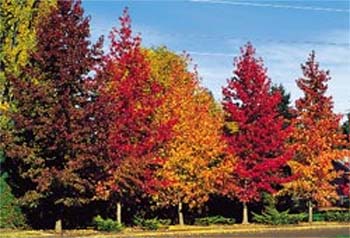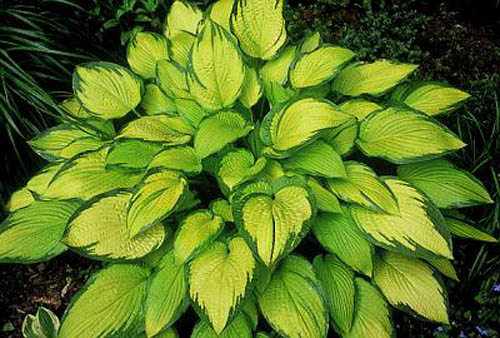Here, in Southwestern Lower Michigan, we can honestly state that moss will grow anywhere, at any time, and with little help from the home gardener. In fact, moss is one of the most persistent and annoying weeds that occurs in home lawns. Peter Landschoot, associate professor of turfgrass science at Penn State says:
“Moss is an opportunistic plant that grows in bare soil or where grass is weak and thin. Once moss has invaded the lawn, grass will not spread into those areas.”
To control moss, you have to consider the reasons why it began to grow in your lawn. Moss only grows in areas of the lawn in which grass does not want to grow. This is areas of shade, low fertility or poorly drained soil. The moss does not kill the grass, the underlying growing conditions are so unfavorable that the grass simply dies out. Attempts to get rid of moss are rarely effective unless a dense, actively growing turf can take its place.
If heavy shade limits good turf growth, steps must be taken to correct the situation. This means removing some trees and shrubs to increase sunlight and air circulation. Rarely will just removing limbs and thinning out branches be enough to impact soil conditions.
To improve soil drainage, you must add large amounts of rich porous topsoil soil high in organic matter. This does not mean going to the local yard and garden store and picking up a few bags of topsoil. We are talking about adding 5-6 inches of new soil, this translates into truck loads not bag loads of soil. The soil adamants must then be worked into the existing loam to a depth of 10-12 inches.
Providing adequate sunlight and drainage can be both difficult and expensive. Low fertility, on the other hand, can usually be easily corrected. The first step in controlling moss is to test the soil for nutrient content and pH. Simple soil test kits are available at most lawn care centers or at your local state extension service at little cost. You can increase the fertility by applying a well balanced lawn fertilizer, such as 13-13-13, while pH can be adjusted with ground dolomite.
You can always kill moss by spraying it with copper sulfate or iron sulfate mixed 2 to 5 ounces to 4 gallons of water and applied at a ratio of 1 gallon per 250 square feet. Unfortunately, new moss will grow back in short order. Similarly, you can mechanically remove the moss and plant the area in sod. This method is a quick fix if you want to hide the problem for a season or two.
An alternative, where shade is quite heavy, is to plant a shade tolerant ground cover rather than grass. This does not correct the problem either but it will improve the appearance of the area. One of the most common uses of English Ivy is to cover shady hillsides or around the base of shallow rooted trees such as maple or white ash.
Another solution, catching on in this area, is instead of trying to get rid of moss and grow grass is to get rid of the grass and grow moss. The Japanese have been using moss for years in the lawn and garden. The appearance of green moss is both vibrant and revitalizing when used correctly. Gardening with moss adds a degree of serenity and timeless beauty to any garden.
While the year round beauty of moss is obvious, it is the resiliency, reduced maintenance, and cost effectiveness that make growing moss appealing. Moss can tolerate extremes in temperature and moisture levels. Even during periods with severe cold, moss, unlike grass, remains a dark green color. Excessive heat or lack of rainfall, also have no permanent effect. Best of all no mowing, fertilizing, watering, and dethatching which means more time and money for the gardener to spend elsewhere.
I know on the surface this does appear extreme, maybe even a little bit crazy but it does work. If you are like me, only growing grass for the green color, moss could be just the answer. Be a little crazy and give moss a try.
Tips of the Month
Here are some basic tips on growing moss in your lawn and garden. Moss is very easy to grow once you understand its culture. Since moss obtains all their nutrients from the air they require only shade, acidic soil, and adequate moisture to flourish. They need a firm soil, with a high clay content in a shady location. It is also imperative that the area in which moss will be grown be kept clear of leaves and other debris.
Selection of the location for the moss lawn or garden is by far the most important consideration you need to make. Most mosses prefer a medium to fairly dense shade. Direct afternoon sun should be avoided. Full sun locations will never work for moss as it likes growing on shady, wooded hillsides. Northern or eastern facing slopes in the woods or lawn are by far the best choice for growing moss.
Before utilizing moss as part of your shade gardening plans, the soil should be tested. The pH should be between 5.5 and 6.0, if necessary, the soil can easily be amended with liquid sulfur or aluminum sulfate to lower the pH.
Place the moss in contact with the soil as you would sod, press firmly into position but do not use a lawn roller. Water the moss regularly for the first three weeks and then gradually reduce watering
Flower of the Month

Fern Moss is often called Splendid Feather Moss, Step Moss, Stair Step Moss or Feather Moss. It is a very versatile, low growing moss with a high transplant success rate. It thrives in shade, but will also tolerate partial dappled sunlight. The color is medium green. There are several species of fern moss all are perennial, relatively large 4-6 inches long, robust, often occurring in wide loose patches. It is abundant and often dominant in coniferous forests, occurring on ledges and in rich humus or decaying wood. Fern moss is often found in cool, moist ravines and mountain woods of the East. It will dry up quickly when the canopy cover is not adequate to prevent high evaporation. Growth is better in undisturbed areas than disturbed areas.
Web Site
Moss Acres is a source for those interested in growing moss. They are located in the northeastern fringe of the Pocono Mountains of Pennsylvania on a 54 acre wooded hillside. Where, according to their web site, moss has been growing for millions of years. From this site they package and ship moss for gardening enthusiasts throughout the Eastern and Midwestern states. When it comes to knowledge and experience with growing moss in the landscape, Moss Acres are the best.
Book of the Month
Moss Gardening: Including Lichens, Liverworts, and Other Miniatures
by George Schenk ()This book, is great for those of us who like the green mosses and lichens of the outdoors. The descriptions are thorough and well illustrated with full color photographs moss being used in the garden.
We found the book fun to read as well as informative although it is geared toward the small container grower.



